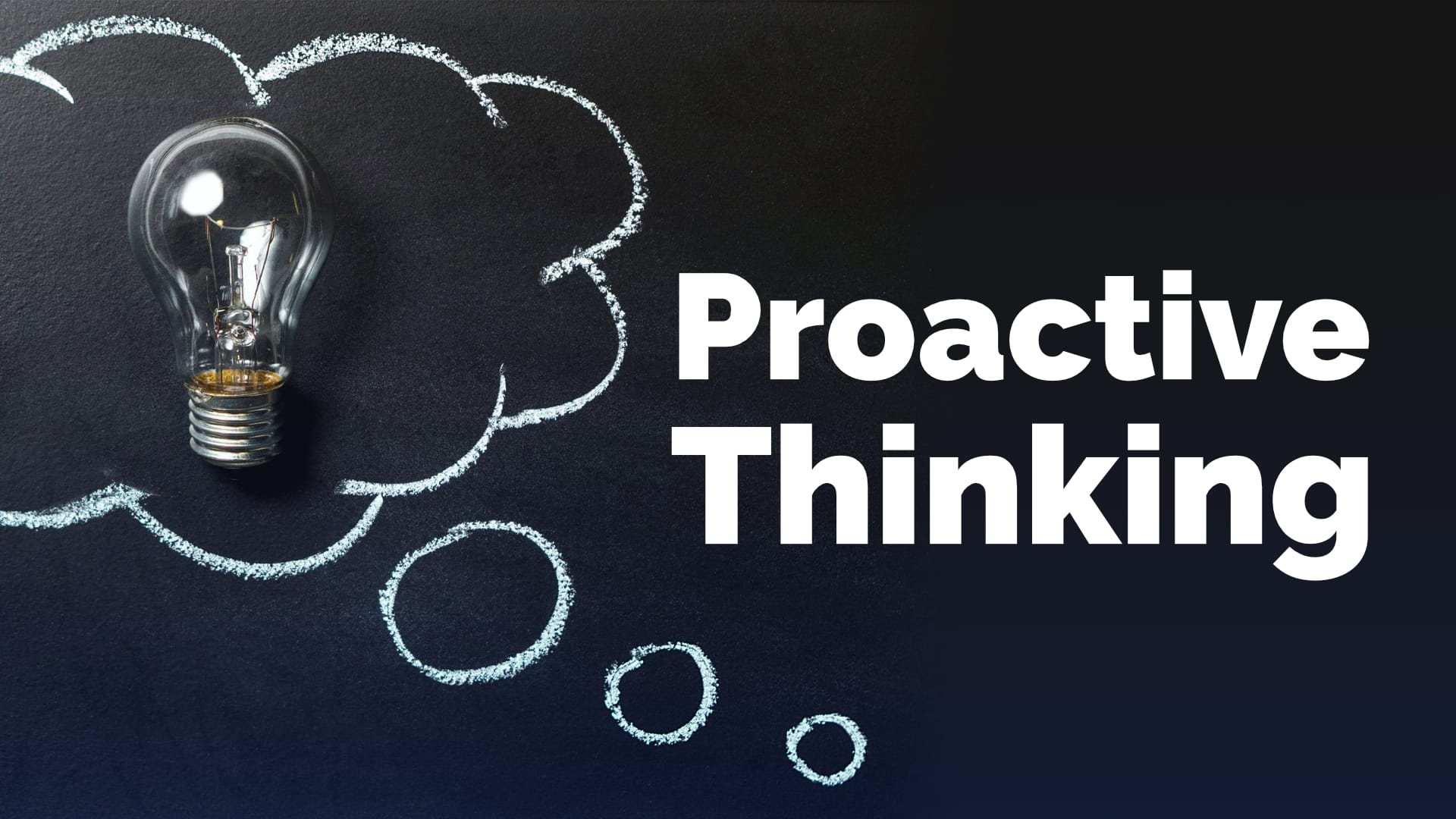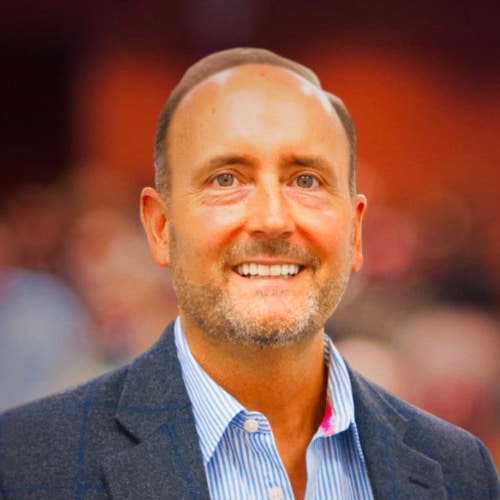October 9, 2024
Proactive Thinking – Innovation Doesn’t Happen By Accident

Henry Ford is known to have said, “Thinking is the hardest work there is, which is probably the reason why so few engage in it.”
This quote communicates a crucial point. Most of us go through our lives without being aware of the thinking processes behind the decisions we make or activities we perform. We operate on ‘autopilot’ – we wake up in the morning, get dressed, journey to work and go about our daily tasks without giving it much thought.
This automatic (i.e. reactive) thinking and behaviour is ideal for routine tasks as it puts us in the right frame to tackle things quickly and efficiently. For instance, we might have found an approach that works particularly well for dealing with difficult customers and will use it time and time again with great success. We don’t have to waste our energy reinventing the wheel each time we encounter that same problem. But while this approach saves us valuable time and effort, it can also lead us to miss opportunities. As our work climate changes rapidly and we encounter new kinds of challenges, we need our thinking to become more ‘switched on’ so that we can seek out different ways to get results. In other words, we need to be able to think proactively.

We’re all capable of running, but a professional sprinter will run in a disciplined and deliberate way to reach optimal performance. It’s the same with our thinking. If a sprinter can be trained to run better with the help of appropriate methodologies, then people who need to solve problems and make decisions can be taught to think better along the same lines. To this end, Proactive Thinking plays a governing role in creating successful innovation. It helps us initiate a conscious and focused approach to problem solving and decision making so that we can think more objectively, work more creatively and plan more effectively.
“Creativity is not an escape from disciplined thinking. It’s an escape with disciplined thinking.”
Jerry Hirshberg, Author of ‘The Creative Priority’
Pointedly, proactive thinking is the final thinking mode in the GRASP acronym because it’s the culmination of all the previous modes of thinking – Generative, Reactive, Analytical and Selective. It’s what connects them all together in a strategic and purposeful way. This transpires because proactive thinking gets us thinking about how we think, rather than simply what we think. Doesn’t it make sense that we have to know how to think before we can decide what to think?
Consider the following two questions:
Q) Would you go swimming in a business suit?
Q) Would you go the gym after eating a three course meal?
These aren’t trick questions… …And I assume I’m correct in guessing that your answer to both would be “No”.
The reason for this is obvious in both cases. It doesn’t make sense to go swimming in a business suit because you wouldn’t be able to swim effectively. Your clothing would be completely inappropriate for the task and would restrict you from swimming freely.

Likewise, you’re unlikely to go to the gym after eating a three course meal because you wouldn’t be able to train effectively. You would probably feel too heavy and sluggish to make any real effort.

These responses are common sense. You’re not going to perform brilliantly in those tasks by carrying them out in that way. This might be a simple point to make, yet when we have to solve a problem or devise a new idea or concept, most of us fail to treat our thinking in the same fashion. Often we allow our minds to work in a disorderly way without considering what’s most effective for the task we’re embarking on. Thinking isn’t a tidy process, but it should be done with a sense of order. When we understand the architecture of our thinking, we can establish better ways of applying it so that our choices and decisions are made using prime mental processes. Proactive thinking assists us in gaining this sort of active control over our thinking, effectively engaging us in metacognition.
What is Metacognition?
Metacognition is commonly understood to mean the act of ‘thinking about thinking’, but in reality it goes far beyond this. More than anything, it’s the act of applying a strategy around your thinking to get the results you want. In this sense it represents the highest order of thinking possible.
The following are questions that I often pose to my audiences during seminars or conferences. What would your answer be to each question?
Q. Do you think about your diet?
Q. Do you think about your fitness?
Q. Do you think about your appearance?
Q. Do you think about your thinking?
If you’re like most people, your answer to the first three questions is likely to be an immediate ‘Yes’. It’s only when we reach the last question that the response tends to be quite different! At best the answer is ‘Sometimes’. More often than not, it’s a straight ‘No’. This is precisely the problem – we rarely, if ever, think about our thinking.

Thinking is something that concerns all of us. It’s an essential component of who we are and part of everything we do, yet we hardly ever examine it on any deep level or strategise how we use it. When it comes to other areas of our life such as our health and appearance, most of us will apply strategies and processes to manage them. For instance, we might design a meal plan or exercise programme to help us reach our ideal weight and fitness level. Becoming fitter and healthier isn’t something that happens by chance. You don’t become healthy by wanting to be healthy, you have to do something to make it happen – you have to use strategy.

The same applies to your mind. Surely it makes sense to manage your thinking through strategy as you would other areas of your life such as your health. A good strategy provides you with the systems and processes that can dramatically improve your ability to find new opportunities, think with greater clarity and problem solve more effectively.
The first step towards applying a strategy to your thinking comes through awareness. Self awareness promotes self regulation. Being proactive demands that you first understand the modes of thinking and how their usage influences your working environment. You wouldn’t risk building a house without a foundation as it would be highly unstable. So why do so many of us rush into problem solving and decision making without a solid grounding in the modes of thinking?
GRASP is a helpful way of identifying the principal thinking modes that we’re apt to use: Generative; Reactive; Analytical; Selective and Proactive. Most people are more or less familiar with each of the modes of thinking, but they rarely use them in the right way. Each mode of thinking has merit and all are useful for problem solving and decision making in various ways. Nonetheless proactive thinking is the ultimate and all-encompassing goal. It’s what helps us stop to recognise what mode of thinking we need to be in for the task at hand – “Do I need to be generative here?” or “Should I be analytical at this stage?” Proactive thinking is what puts all the distinct modes of thinking into context. And by applying proactive thinking, you put yourself in a better position to create peak conditions for innovation.
Setting up the most fertile climate for your thinking involves a good deal more than saying “I need new ideas for the promotional mix, so I’ll use generative thinking”. While still helpful, utilising the modes individually is far less effective than structuring them together in a careful and considered process. There’s always the danger that your thinking might become wasteful and unproductive when you apply it ad hoc. For instance, you can risk simultaneously generating and judging ideas when there’s no clear process to separate the tasks. The best results can only be achieved using the best processes. Consequently, you need to be proactive in controlling how you direct your mental path.
Applying a ‘Thoughtful’ Process
A successful business relies on a clear strategic process to give it direction and drive its resources (money, time, people, equipment) towards its goals. It’s all too easy for a business to go astray without one. Similarly, those who have to solve problems and make decisions can benefit tremendously from a formal process that guides their thinking towards innovative results. Shelley Carson, author of Your Creative Brain argues that the key to being creative is to approach it as a step-by-step process similar to how you would prove a mathematical theorem. Leave out a step and you risk missing out on the stroke of genius that could illuminate the right answer.
The chief advantage of having a process for approaching challenges is that it makes your thinking conscious. It becomes much easier for you to recognise whether you’re performing a task with the appropriate understanding and intention. What’s more, you can be more purposefully innovative as the process gives you a disciplined, repeatable way to generate more high quality ideas, more of the time.
“Success is not ‘reaching a goal’ – it is the pathway to the goal.”
Jim Wheeler, Author of ‘The Power of Innovative Thinking’
It’s important to remember that innovation doesn’t happen by accident. We could have the right people, the right place and the right timing, but we would still need a strategy to use them to the best advantage. The power of proactive thinking lies in its potential to increase your chances of finding, developing and implementing novel and sound solutions through strategy. The GTS System provides the two elements you need to be proactive. Once you have a basic knowledge and awareness of your thinking (GRASP), it becomes easier to balance and orchestrate when you need to be generative, reactive, analytical and selective to create the best momentum for your thinking. The overall result is that you stop thinking along the same old lines and can differentiate in relevant and fruitful ways.
